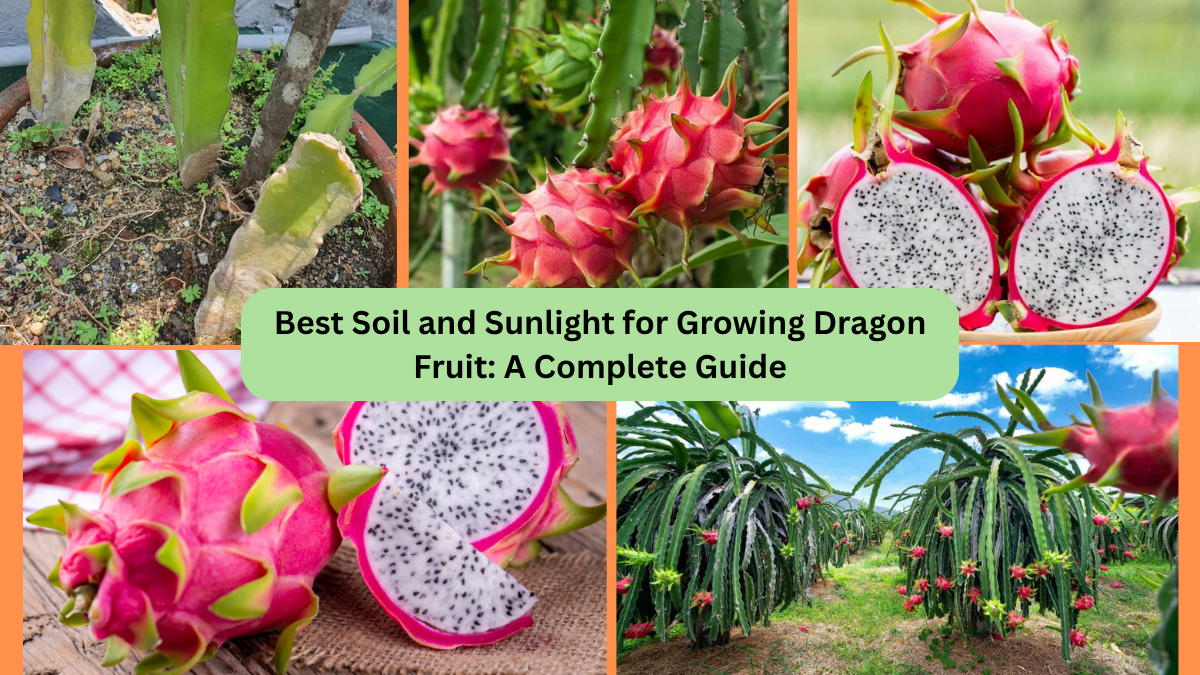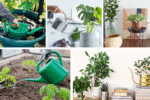Dragon fruit, also known as pitaya, has become a favorite among gardeners and fruit enthusiasts thanks to its exotic appearance, striking night-blooming flowers, and vitamin-packed fruit. Native to Central America and now cultivated globally in tropical and subtropical climates, dragon fruit is a climbing cactus that thrives in specific conditions — especially when it comes to soil quality and sunlight exposure.
Whether you’re growing it in your backyard, greenhouse, or balcony garden, understanding the ideal soil composition and sunlight needs is the foundation for cultivating healthy plants and enjoying vibrant, homegrown fruits. In this guide, we’ll break down exactly what you need to provide your dragon fruit for it to flourish.
Why Growing Conditions Matter for Dragon Fruit
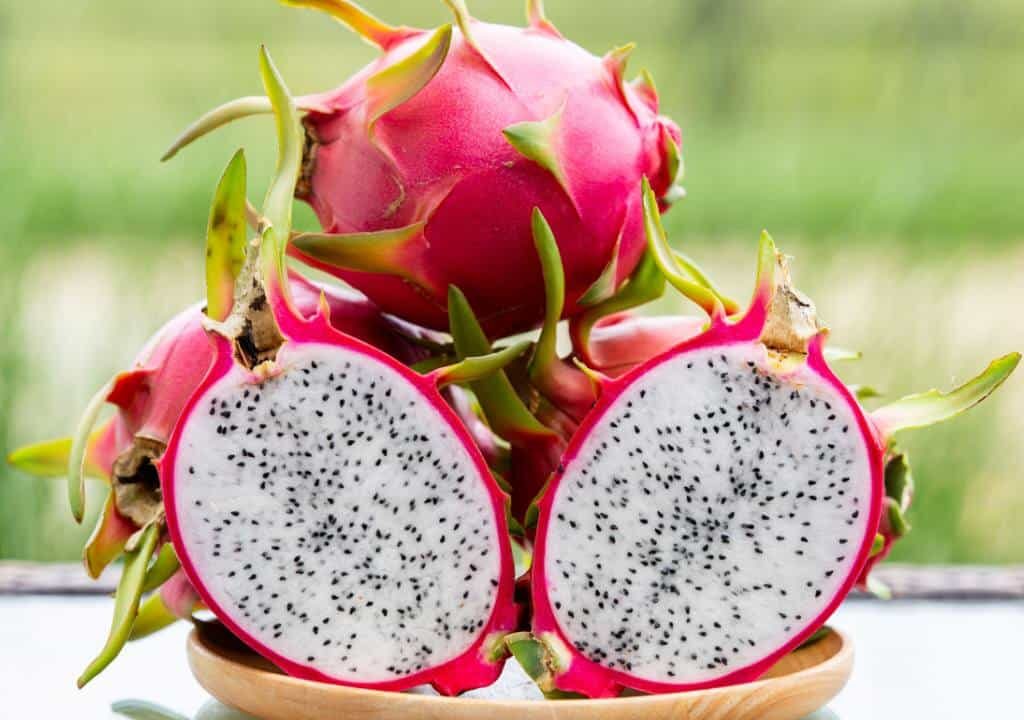
As a member of the cactus family (Cactaceae), dragon fruit is hardy, drought-tolerant, and fairly easy to grow once established. However, achieving optimal growth and abundant fruiting depends on giving the plant the right environment, particularly:
- Well-draining, nutrient-rich soil
- Ample sunlight
- Proper water management
Without these conditions, plants can struggle with poor flowering, root rot, or stunted growth. Let’s dive deeper into how to get the soil and sunlight right for dragon fruit success.
Best Soil for Growing Dragon Fruit
What Type of Soil Does Dragon Fruit Prefer?
Dragon fruit thrives in loose, sandy or loamy, well-draining soil. While it’s a cactus, it still enjoys rich, organic matter to support its fast-growing nature and fruit production.
Ideal soil characteristics:
- Good drainage: Prevents root rot and fungal issues.
- Slightly acidic to neutral pH: Between 6.0 and 7.0.
- High organic content: Supports healthy, vigorous growth.
- Aerated and loose texture: Encourages root expansion.
Why Is Good Drainage So Important?
Dragon fruit roots are susceptible to rot if left in waterlogged soil. In nature, they grow in sandy or rocky areas where water drains quickly. Replicating this at home is crucial, especially if you live in a humid or rainy climate.
Signs of poor drainage:
- Yellowing, mushy stems
- Root rot
- Fungal spots on stems
DIY Soil Mix for Dragon Fruit
If you’re planting in containers or raised beds, creating your own soil mix ensures ideal conditions.
Recommended soil mix recipe:
- 40% cactus or succulent potting mix
- 30% organic compost or aged manure
- 20% coarse sand or perlite
- 10% pumice or small gravel
This mix provides excellent drainage while supplying nutrients and promoting aeration.
Tip: Avoid heavy garden soil or clay-based mixes as they retain too much moisture.
How to Prepare Ground Soil for Dragon Fruit
If planting directly in the ground:
- Choose a slightly elevated area to prevent water accumulation.
- Amend native soil by adding coarse sand and organic compost.
- Ensure the planting hole is at least 20 inches wide and 20 inches deep.
- Mix native soil with cactus mix and compost at a 1:1 ratio.
Best Sunlight Conditions for Dragon Fruit
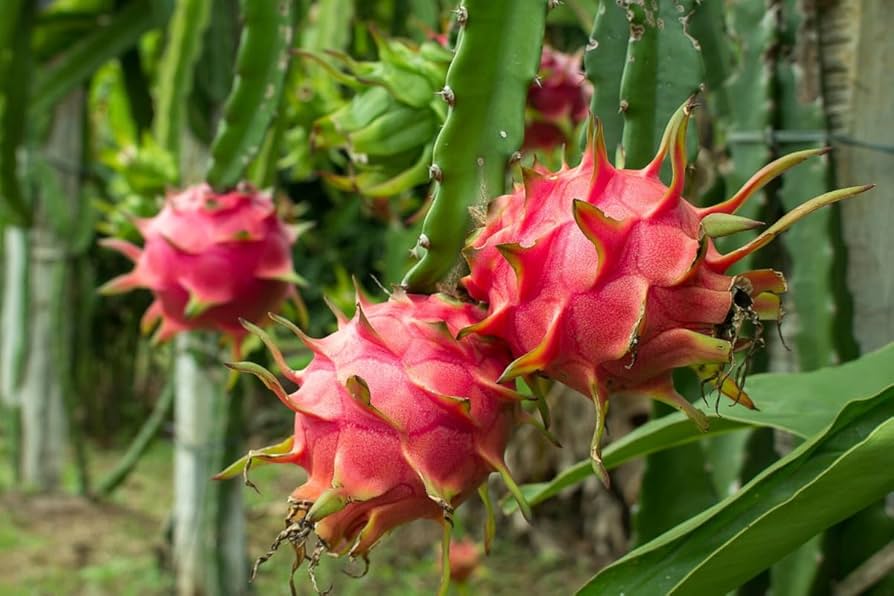
How Much Sunlight Does Dragon Fruit Need?
Dragon fruit thrives in full sun to partial shade. It requires at least 6–8 hours of direct sunlight daily for healthy growth and flower production.
In cooler or temperate zones:
- Place in the sunniest spot available.
- Use reflective surfaces to increase light exposure.
In very hot, tropical areas:
- Provide light afternoon shade or plant near a sun-filtering structure to prevent sunburn on tender stems.
Can You Grow Dragon Fruit Indoors?
Yes — with the right lighting. Indoors, place your plant:
- In a south-facing window for maximum natural light.
- Supplement with LED grow lights for 10–12 hours daily if natural light is insufficient.
What Happens with Too Little or Too Much Sun?
Too little sun:
- Slow, leggy growth
- Poor or no flowering
- Pale, weak stems
Too much intense sun (especially in scorching climates):
- Scorched or yellowed stems
- Sunburn patches (dry, brown areas)
- Wilting or shriveled appearance
Solution: Adjust light exposure based on your climate, adding shade cloth or moving pots as needed.
Planting Tips for Success
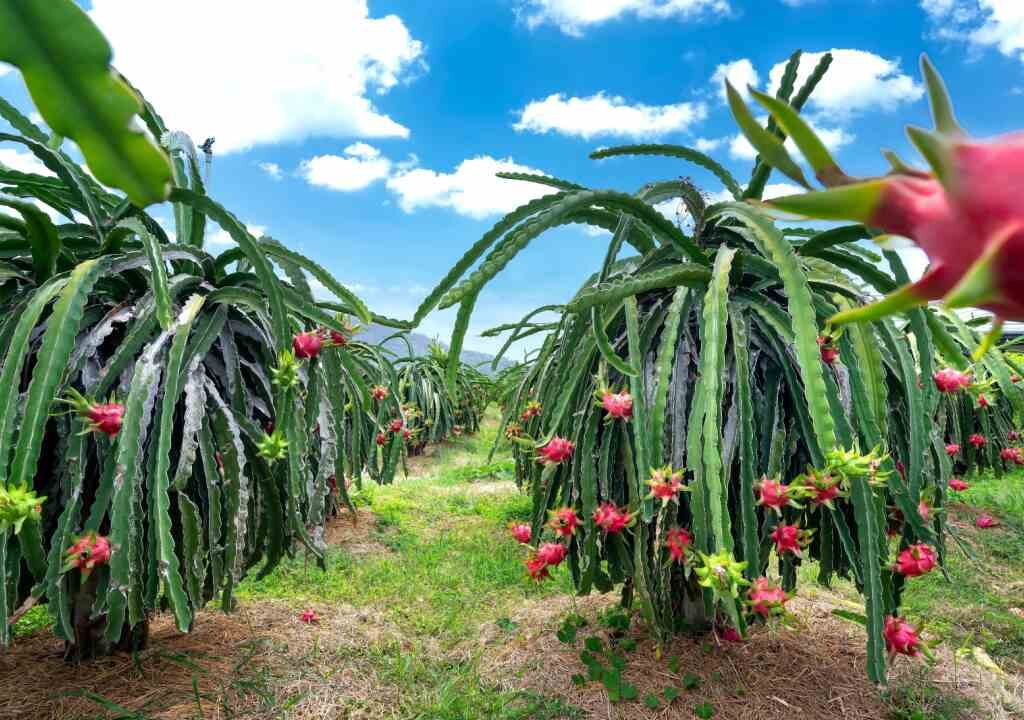
Container Growing
If using pots:
- Select a 15–25 gallon container with multiple drainage holes.
- Fill with your custom cactus soil mix.
- Position in a bright, sunny spot.
- Install a sturdy trellis or support stake.
Tip: Plastic pots can heat up and dry soil quickly in summer, while terracotta allows for better moisture control.
In-Ground Planting
When planting outdoors:
- Choose a sunny, sheltered location.
- Prepare soil with amendments as detailed above.
- Install a vertical support post (wood, concrete, or metal) for the plant to climb.
- Plant at the base, and gently tie the growing stems to the support.
Spacing:
Allow at least 8–10 feet between plants to avoid overcrowding.
Watering Considerations for Soil & Sun Balance
The watering schedule is closely tied to soil and sunlight exposure:
- In well-draining soil with high sun exposure, water when the top 1–2 inches of soil feel dry.
- In cooler or shaded areas, reduce watering frequency.
Avoid soggy soil at all costs. Overwatering is the primary cause of root rot in dragon fruit plants.
Seasonal Sunlight and Soil Care Tips
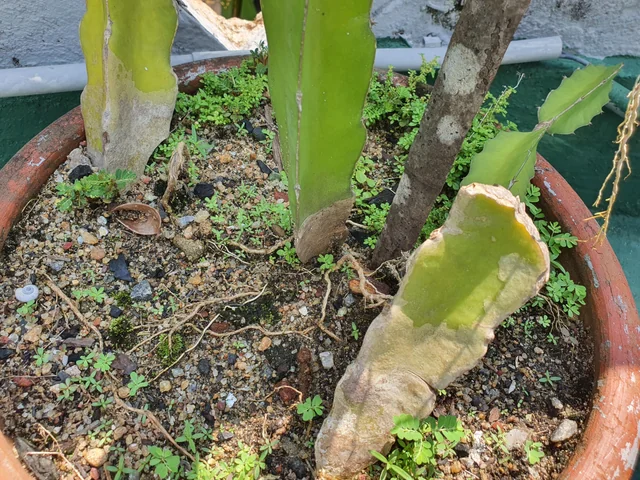
| Season | Sunlight Care | Soil & Watering Tips |
|---|---|---|
| Spring | Maximize sun exposure for growth | Start fertilizing, water regularly |
| Summer | Provide partial shade in extreme heat | Increase watering as needed, monitor drainage |
| Fall | Maintain sunlight exposure | Reduce watering, light fertilizing |
| Winter | Protect from frost or move indoors | Minimal watering, avoid wet soil |
Fertilizing and Mulching for Soil Enrichment
Fertilizing and mulching help maintain soil health:
- Apply balanced NPK fertilizer (10-10-10) every 6–8 weeks during active growth.
- Use organic mulch (straw, wood chips) around the base to conserve moisture and regulate temperature — keeping it a few inches from the stem to avoid rot.
Note: Avoid chemical-heavy fertilizers that could damage the shallow, sensitive roots.
Common Soil and Sun-Related Issues
Yellowing Stems:
- Overwatering or poor drainage.
No Flowers or Fruit:
- Insufficient sunlight or over-fertilizing with nitrogen.
Sunburn:
- Too much direct midday sun in hot climates.
Root Rot:
- Soil that stays soggy for extended periods.
Solution: Adjust watering, improve soil drainage, or manage light exposure accordingly.
Final Thoughts
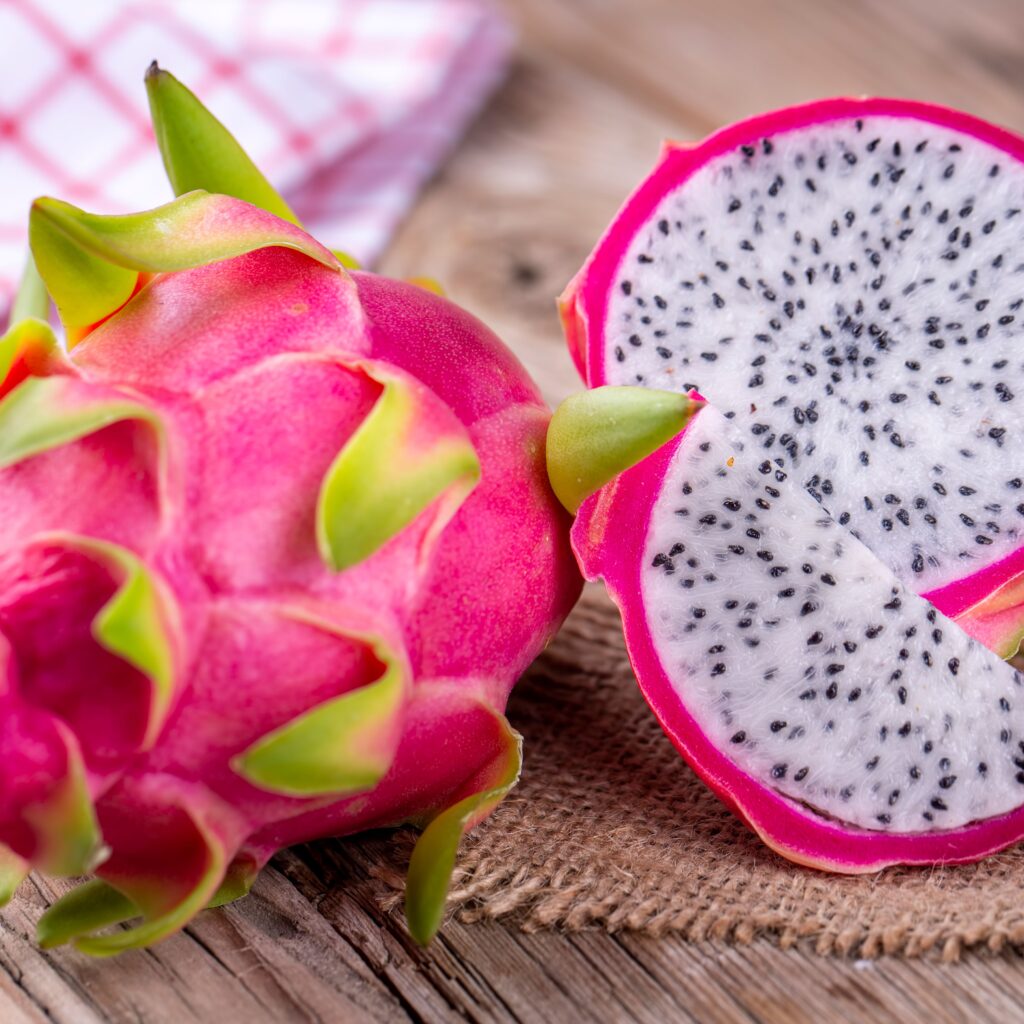
For lush, healthy dragon fruit plants that reward you with stunning flowers and antioxidant-rich fruits, the right soil and sunlight balance is key. Remember:
- Use well-draining, sandy, organic-rich soil.
- Ensure 6–8 hours of sunlight daily.
- Adjust water and light exposure based on climate and season.
- Support plants properly with stakes or trellises.
With the proper environment, dragon fruit plants can thrive in containers, greenhouses, or backyard gardens — delivering both tropical beauty and a delicious harvest.
